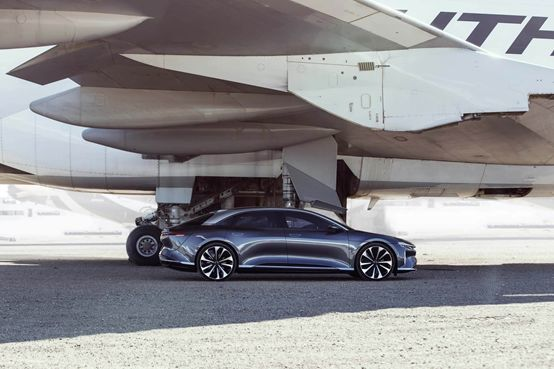I believe many people have never heard of the brand Lucid Motors, which does not even have a Chinese name and has never been seen in a PPT. However, these are not important. What is important is that Lucid Motors recently received a $1 billion investment from the Public Investment Fund of Saudi Arabia. When Elon Musk planned to privatize Tesla, the Public Investment Fund of Saudi Arabia was also ready to lend a hand to Elon Musk. Does this sudden interest in Lucid Motors make you curious?
In fact, Lucid Motors released their first car model, Lucid Air, at the end of 2016. But why has it not been mass produced yet? We will talk about this later. First, let’s take a look at Lucid Air itself. How does it have the confidence to surpass Tesla Model S?
Let’s start with the exterior design. Since Lucid is a new company, the design of the exterior is also starting from a “blank sheet of paper”. Designers do not need to consider any family elements, they just need to boldly use their imagination. The early design inspiration of Lucid Air came from airplanes. The name Air has both metaphorical and literal associations with this. From the pictures, it seems pretty good. The narrow air intake grille blends with the LED headlights to form a harmonious front.
If you only look at the front side before the B-pillar, everything seems normal. However, if you look further back, Lucid Air’s sloping design is quite strange.
The design of the D-pillar and the curved rear windshield is very novel. Looking along the rear windshield to the tail, it’s even stranger. It’s hard to say whether it is ugly or not, but it needs some getting used to.
The through-type full LED taillights and the front design form an echo, which is also a popular element currently, and it has some recognition.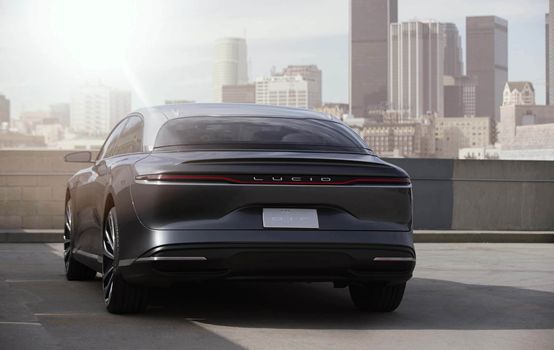
The interior design looks relatively conservative with four large screens in conventional positions, without exaggerated dimensions, and even retains physical buttons for the air-conditioning system! By the way, haven’t many people found the fourth screen yet? The fourth screen is actually located on the left side of the instrument panel, used to control the unlocking of the car doors, the switch of the front trunk, the charging port, and the rear trunk.
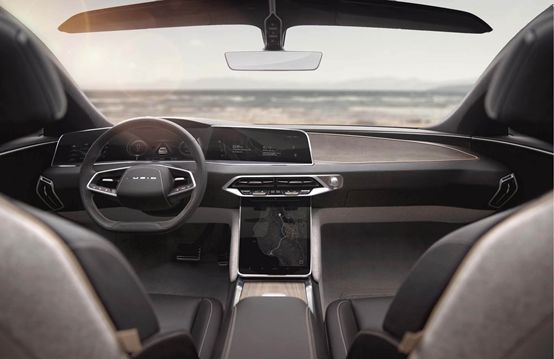
Although the design is relatively conservative, there is no lack of luxury. The all-leather interior and real wood decorative panels are not at all stingy. What’s more exaggerated is the rear row of the Lucid Air. The executive seats with good wrapping and the huge rear space directly position it to the level of the BMW 7 Series and the Mercedes-Benz S-Class, leaving no suspense for surpassing the Tesla Model S.


Surpassing the Tesla Model S in the interior is not difficult, after all, Tesla has indeed done only an average job in this area. The real challenge to surpass the Tesla lies in the three-electric system. Let’s take a closer look at the essence of the electric vehicle. What is the level of the Lucid Air’s three-electric system?
In terms of power, Lucid Air has two options: one is a single-motor rear-wheel drive with 400 horsepower and a maximum range of 384 kilometers (EPA), and the second is a dual-motor all-wheel drive with 1000 horsepower and a maximum range of 504 kilometers (EPA) or 640 kilometers (EPA), accelerating to 100 kilometers per hour in about 2.5 seconds. The maximum battery capacity can reach 130 kWh, exceeding the 100 kWh of the Tesla Model S.
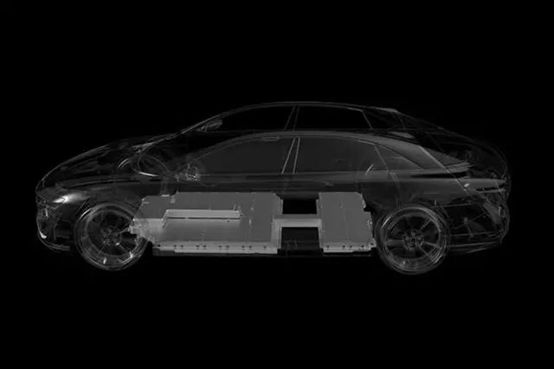 In terms of the battery system, there are many similarities between Lucid and Tesla. Lucid uses 2170 cylindrical cells, which are said to exceed existing battery standards in energy density, capacity, battery life, and safety, and are provided by LG Chem and Samsung SDI, then processed into battery packs by Lucid. With nearly ten years of experience in developing and operating electric vehicle power battery packs, I can’t help but look forward to the battery pack density of the Lucid Air.
In terms of the battery system, there are many similarities between Lucid and Tesla. Lucid uses 2170 cylindrical cells, which are said to exceed existing battery standards in energy density, capacity, battery life, and safety, and are provided by LG Chem and Samsung SDI, then processed into battery packs by Lucid. With nearly ten years of experience in developing and operating electric vehicle power battery packs, I can’t help but look forward to the battery pack density of the Lucid Air.
In terms of autonomous driving, Lucid directly uses Mobileye’s cameras and processing chips. The vehicle has 6 millimeter-wave radars, 8 cameras, and 4 lidars, while Tesla has 8 cameras, 1 front millimeter-wave radar, and 12 ultrasonic radars. Compared to Tesla, Mobileye technology is more mature, but Lucid Motors has not yet mastered the core technology.
Let’s not consider how integrated the Lucid Air is, including future software adaptation. We’ll discuss that after it has been mass-produced. However, judging from the surface strength of the interior design, power data, and battery data, the Lucid Air seems to be no less than the Model S, and it’s priced at $60,000 in the United States, which is eligible for US government subsidies. However, it is currently unavailable for purchase in China.
Now, how was this seemingly decent car built by what kind of team?
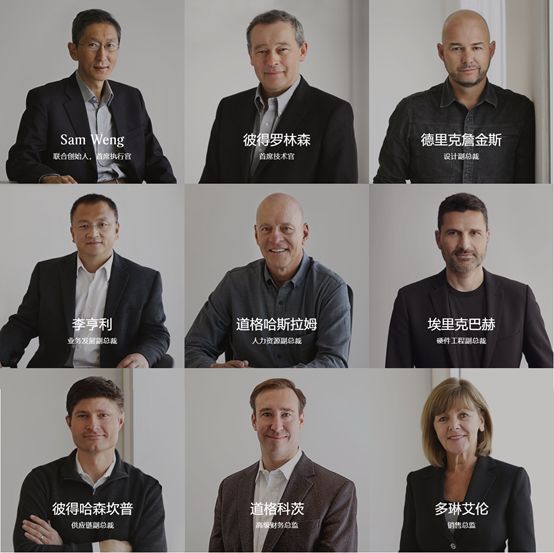
CEO: Sam Weng, who was previously responsible for the development of Lucid’s battery system and powertrain, has over 30 years of engineering experience and 20 years of business development experience.
CTO: Peter Rawlinson, who has over 30 years of experience in vehicle engineering and development, was formerly Vice President of Engineering at Tesla and Chief Engineer of the Model S, responsible for Model S engineering design.
Vice President of Hardware Engineering: Eric Bach, who was in charge of engineering functions for Tesla’s Model S, Model X, and Model 3.
Vice President of Supply Chain: Peter Hasenkamp, who was formerly the Director of Procurement at Tesla and was responsible for developing and executing the initial foundational strategic procurement plan for the Model S.
Looking at their identities, did you notice anything? Three out of the four people have participated in the research and development or manufacturing of the Model S. Can they really create a car that surpasses the Model S? It’s still a question mark, and we look forward to finding out.# Lucid Motors: What Has Happened and What’s Ahead?
Lucid Motors, formerly known as Atieva, was founded in California, USA, in 2009 by Chinese entrepreneur Peter Rawlinson, who was a former board member and chief engineer at Tesla. The company specializes in developing core systems for new energy vehicles and aspires to create luxury electric vehicles.
During the Series B funding in 2013, Lucid Motors received investments from Silicon Valley venture capital firm Venrock, Mitsui & Co., Ltd of Japan, and Tsing Capital. In 2014, Beijing Automotive Industry Group (BAIC Group) and Jia Yueting participated in Atieva’s Series C funding.
In 2016, Atieva officially changed its name to Lucid Motors and introduced its first model, the Lucid Air. Its original plan was to begin mass production in its Arizona factory by the end of 2018. However, due to financial problems, the factory construction has been continuously delayed, and the mass production of Lucid Air is currently impossible. Nevertheless, Lucid Motors has received a $1 billion investment from the Public Investment Fund of Saudi Arabia, which has relieved the company’s financial crisis. The earliest possibility for mass production of Lucid Air is likely to be at the end of 2020. Even if Lucid Motors catches up to Tesla’s pace now, what will its level be like in two years? Even if Lucid Motors manages to achieve mass production, there is still a long and difficult journey ahead.


- Why Were People Disappointed with the Mercedes-Benz EQC?* Audi e-tron: A Classic Electric Vehicle Worthy of Recognition

This article is a translation by ChatGPT of a Chinese report from 42HOW. If you have any questions about it, please email bd@42how.com.
